How to Cook Butternut Squash (Easy Recipe)
Oct 09, 2023, Updated Mar 07, 2025
This post may contain affiliate links. Please read our disclosure policy.
Learn how to cook butternut squash the best way! Roasting whole butternut squash in the oven is the tastiest method. I provide nine flavor variations using the same cooking method! Find your favorite way to cook this delicious winter vegetable.
Makes a perfect side dish for Chicken Thighs.
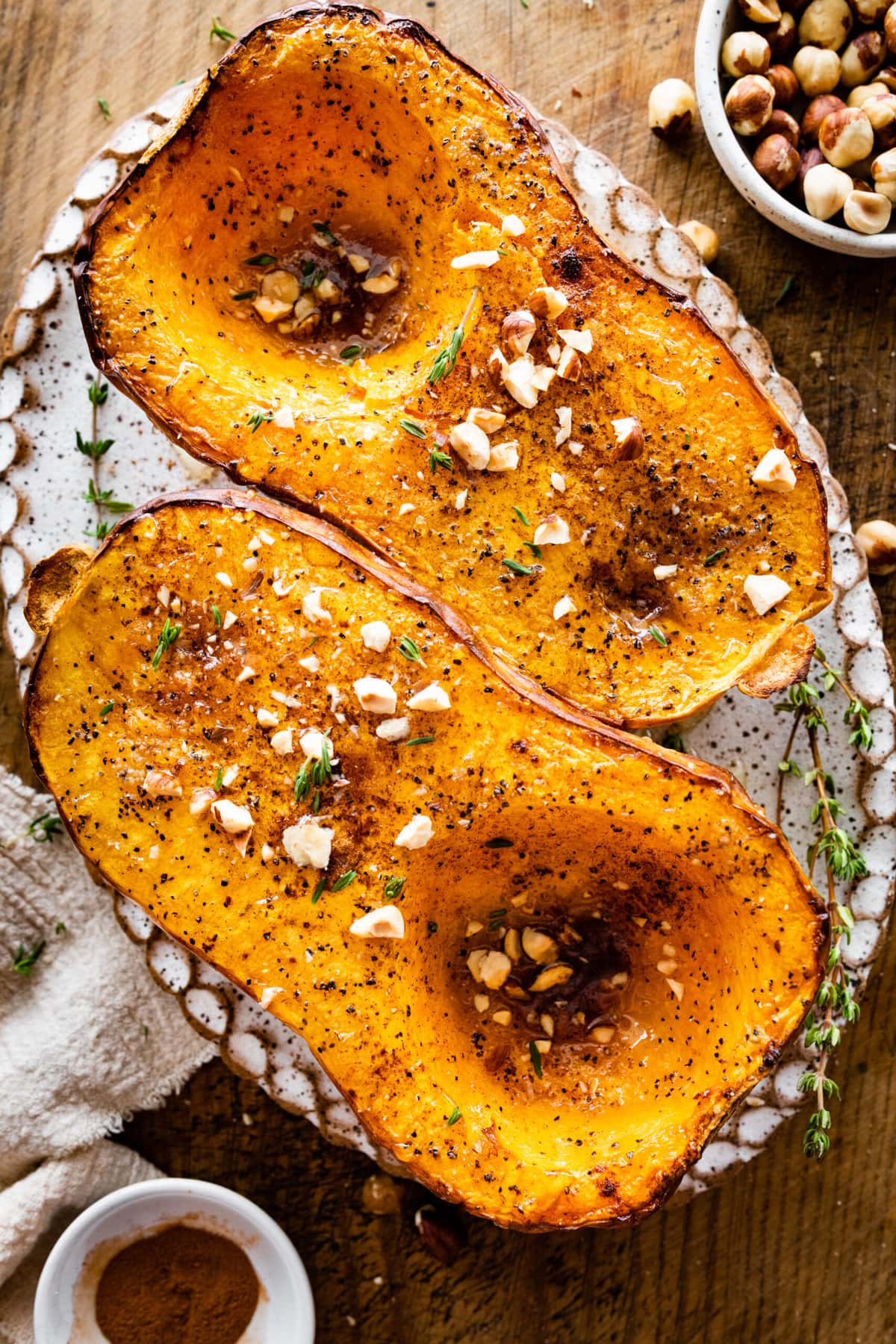
Get ready to savor the comforting flavors of fall with this irresistible roasted butternut squash recipe! Tender, golden bites of butternut squash are the show’s star, melting in your mouth. This recipe is your ticket to an easy, elegant side dish for family dinners or festive gatherings.
You will also love Butternut Squash Casserole, Roasted Acorn Squash, and Hasselback Sweet Potatoes. Learn How Long to Roast a Whole Chicken to pair with this recipe!
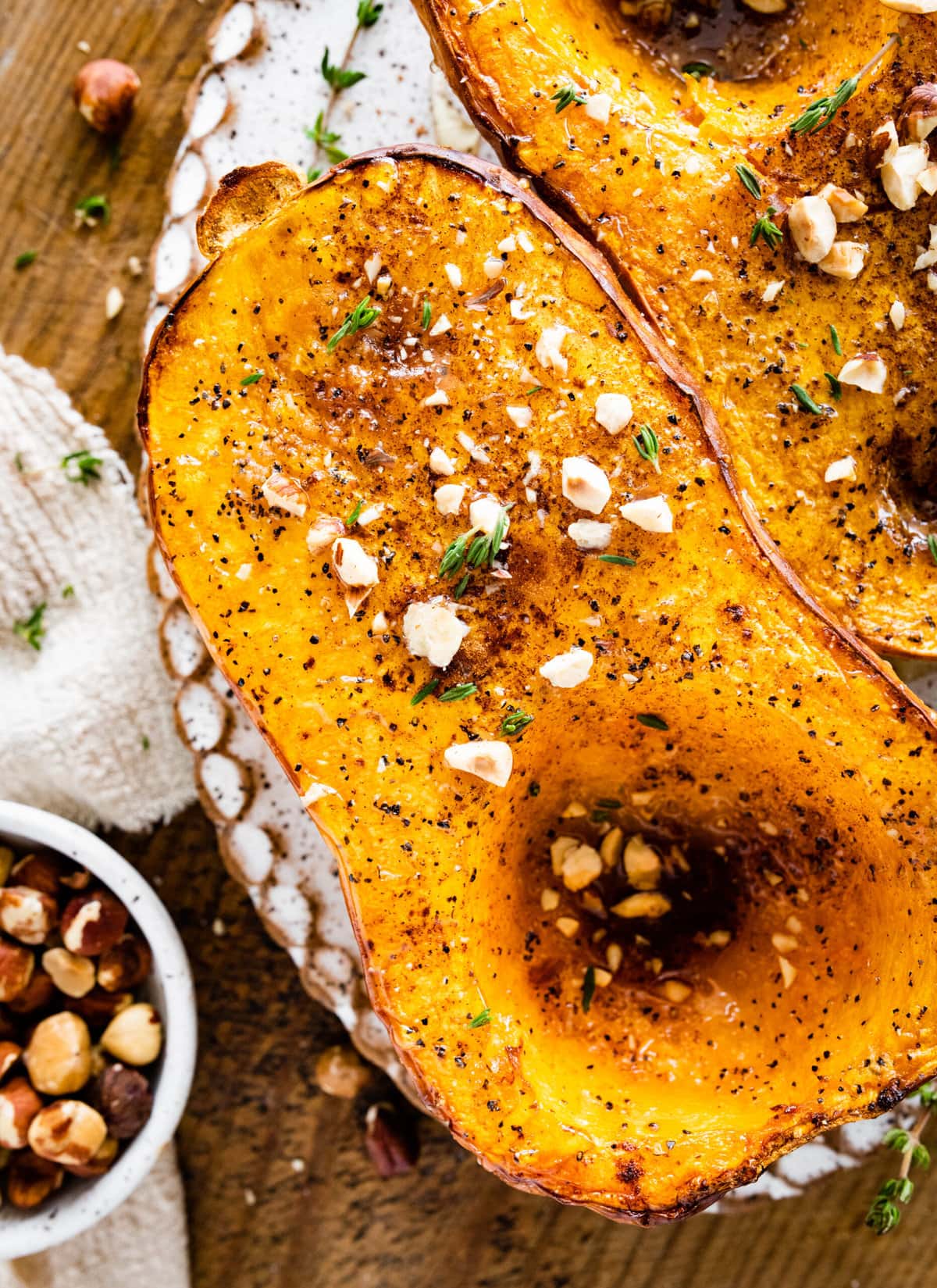
Table of Contents
Simple Ingredients
The easiest way for whole roasted butternut squash! Simple and minimal ingredients with little prep time (it’s unnecessary to peel butternut squash for this recipe.) for delicious, flavorful squash every time. It’s one of those great recipes to make in a variety of ways.
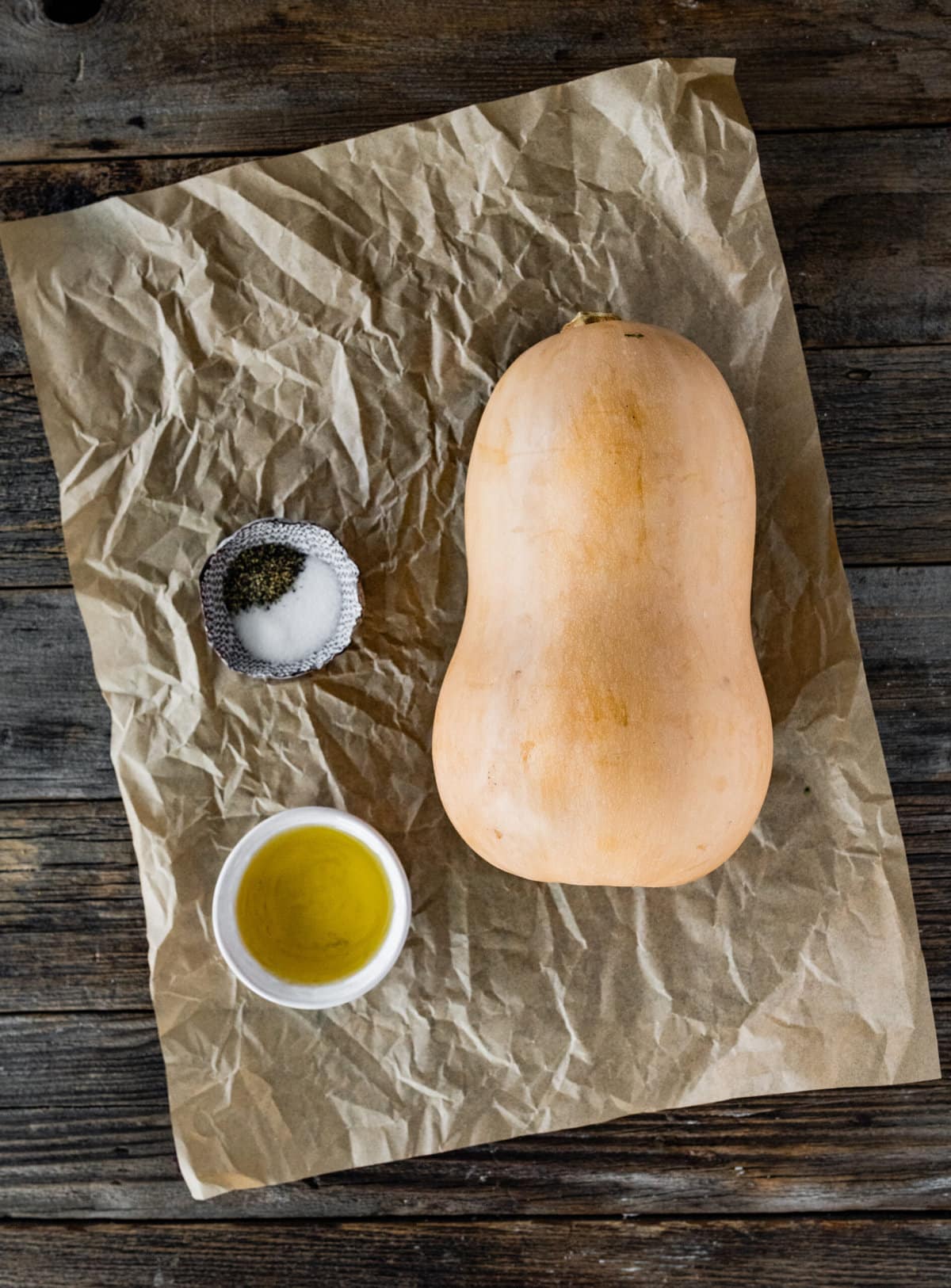
- Whole butternut squash
- Butter (melted) or Olive Oil
- Salt and black pepper, to taste
- Brown sugar (optional)
- Ground cinnamon (optional)
- Hazelnuts (optional) for garnish
- Savory herbs (optional) for garnish
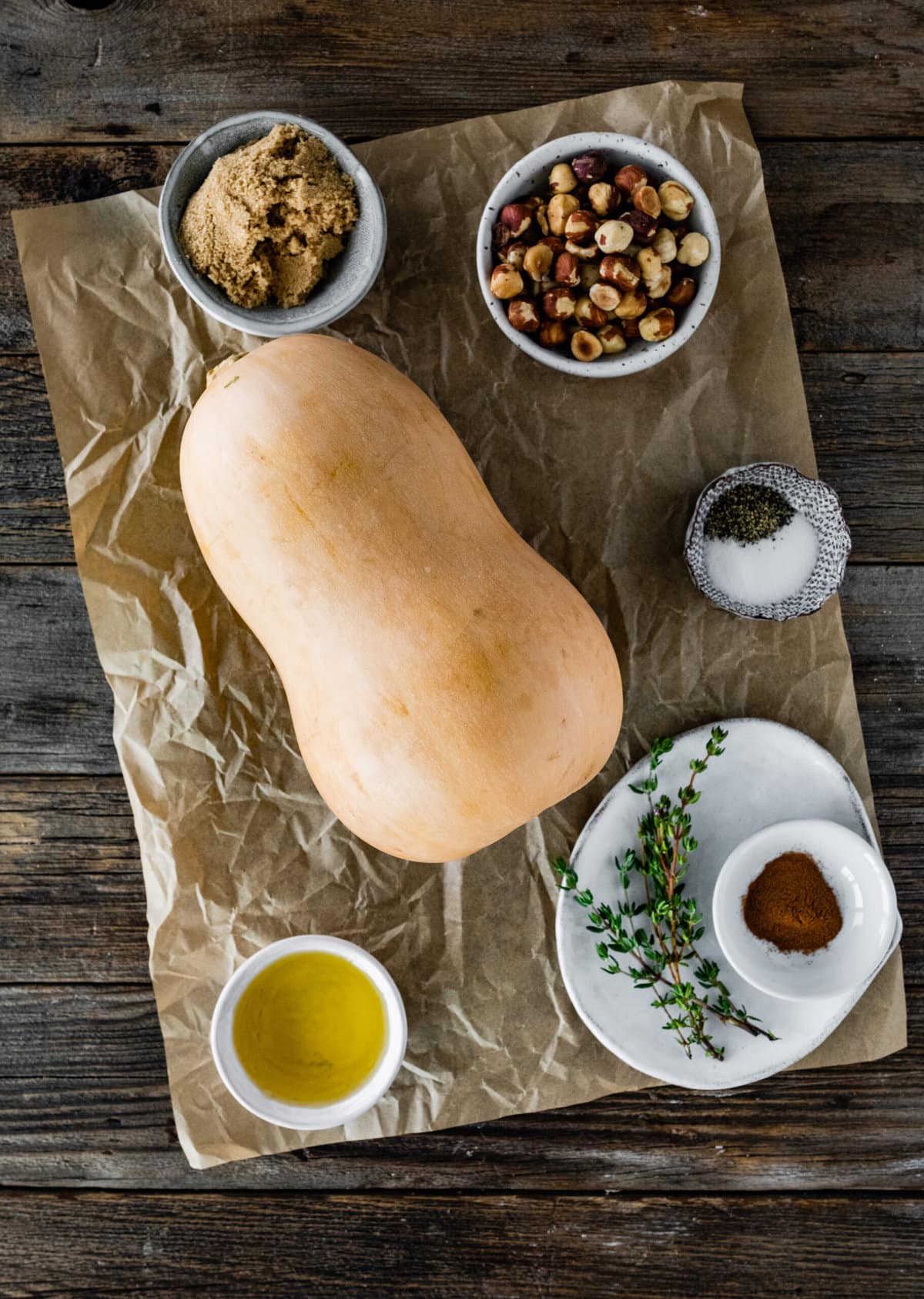
*See variations for ten more flavor options.
See the recipe card for quantities.
How To Roast Butternut Squash

Preheat the Oven: Preheat your oven to 400°F.
Prepare the Butternut Squash: Wash the butternut squash thoroughly under running water to remove any dirt. Using a sharp knife on a clean cutting board, carefully cut the butternut squash in half lengthwise. This will create two halves, each with a bulbous end and a narrower neck.

Scoop Out Seeds: Use a spoon to scoop out the seeds and stringy fibers from both halves of the butternut squash.
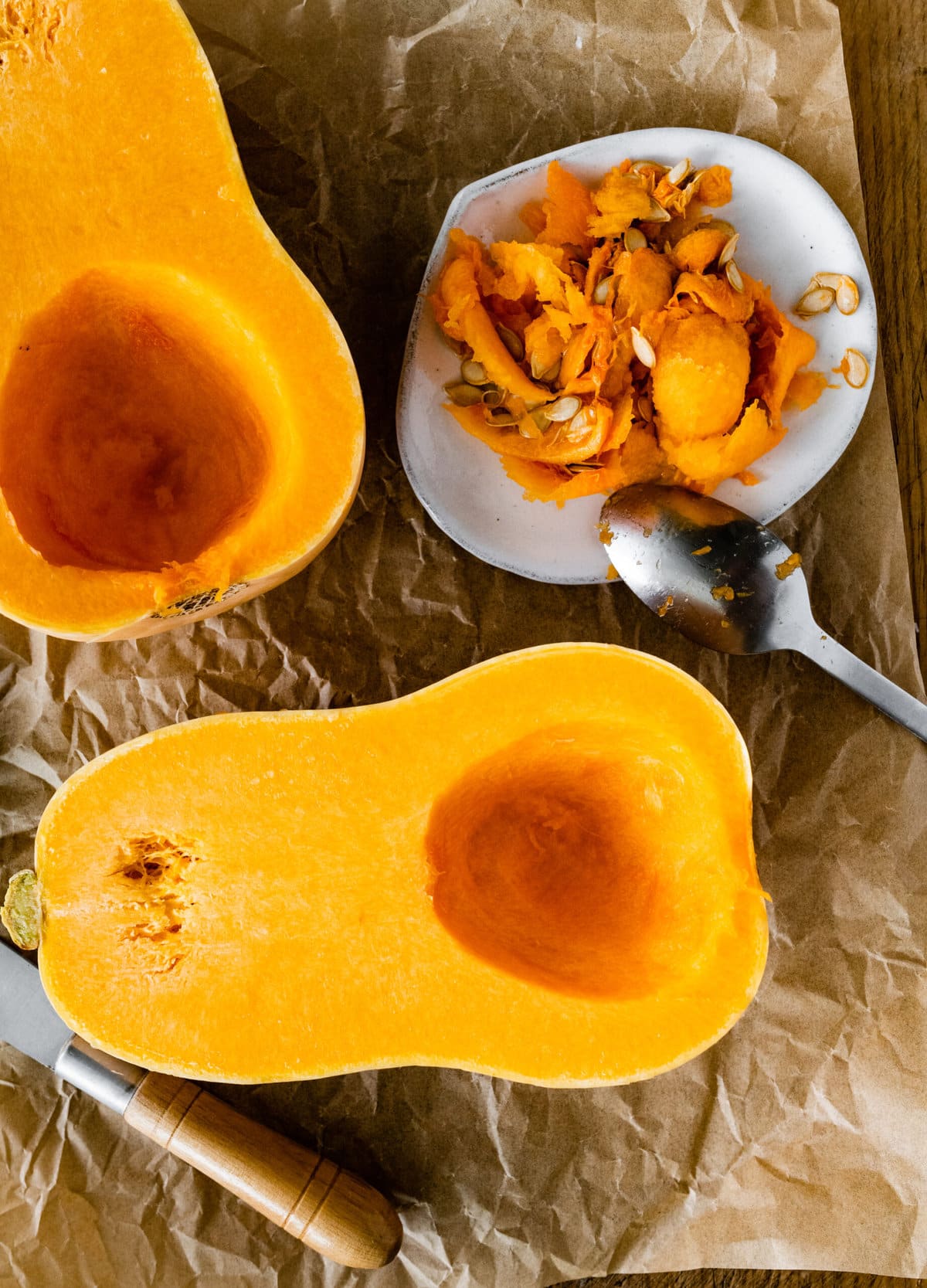
You can discard the seeds or save them for roasting later if desired.

Season the Squash: Place the butternut squash halves, cut side up, on a baking sheet, baking pan, or roasting pan. Brush the olive oil or melted butter over each squash half. Spread it around to coat the flesh.

Sprinkle salt and pepper over the buttered or oiled squash halves. This will enhance the flavor.
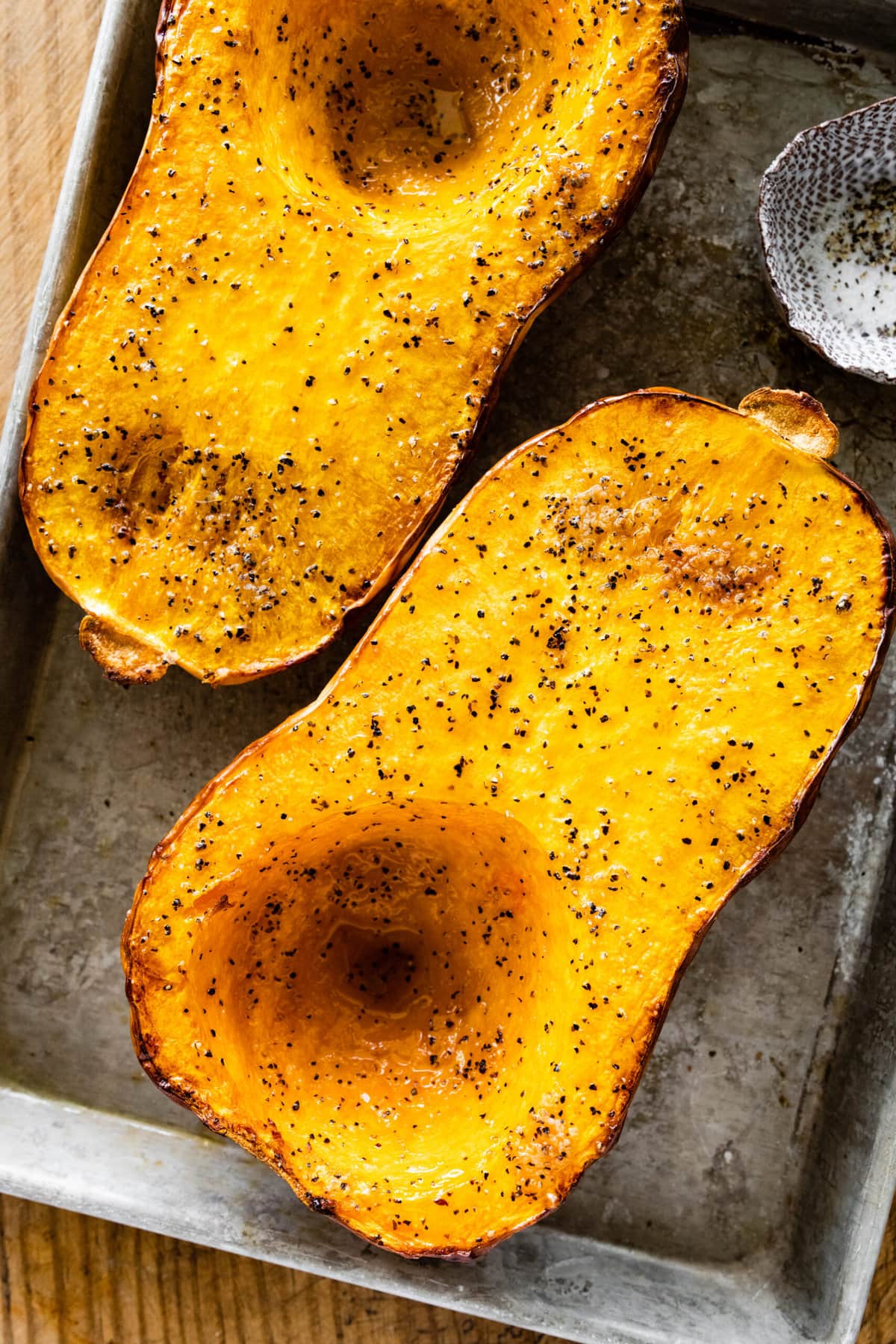
Roasting the Squash: Place the baking sheet or roasting pan with the butternut squash halves in the oven. Roast the squash for about 45-60 minutes or until the flesh is tender and easily pierced with a fork. Cooking times may vary depending on the size and thickness of the squash.
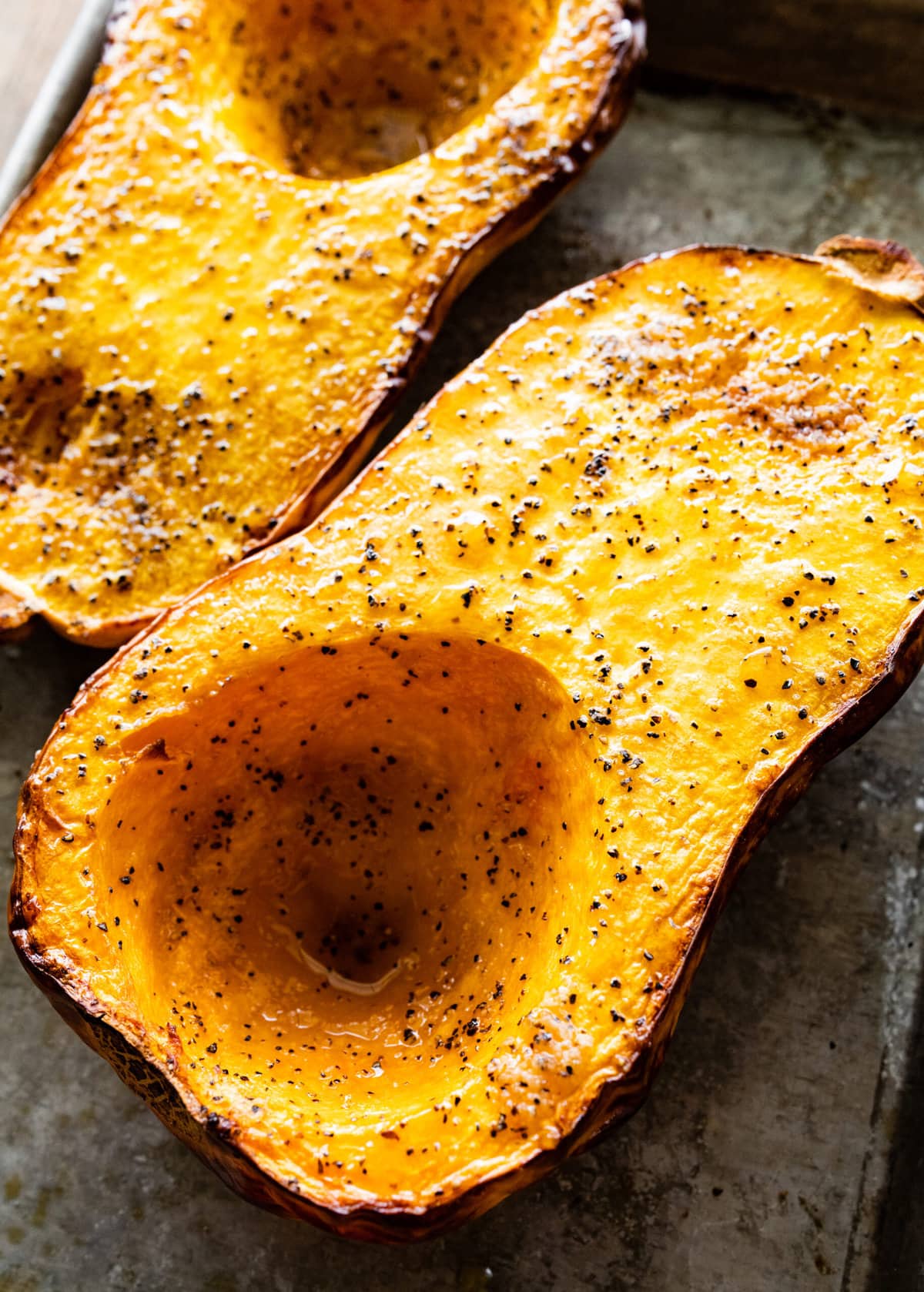
Check for Doneness: To check if the squash is done, insert a fork or knife into the flesh of the thickest part. It should slide in and out easily without resistance (fork tender).
Serve and Enjoy: Once the butternut squash is cooked to your desired tenderness, remove it from the oven. Let the squash cool for a few minutes before handling, as it will be very hot. Garnish with hazelnuts and fresh herbs, if desired. You can scoop the soft flesh from the skin using a fork and place it on a serving plate.
Serve: Serve the roasted butternut squash as a delicious side dish or enjoy it alone.
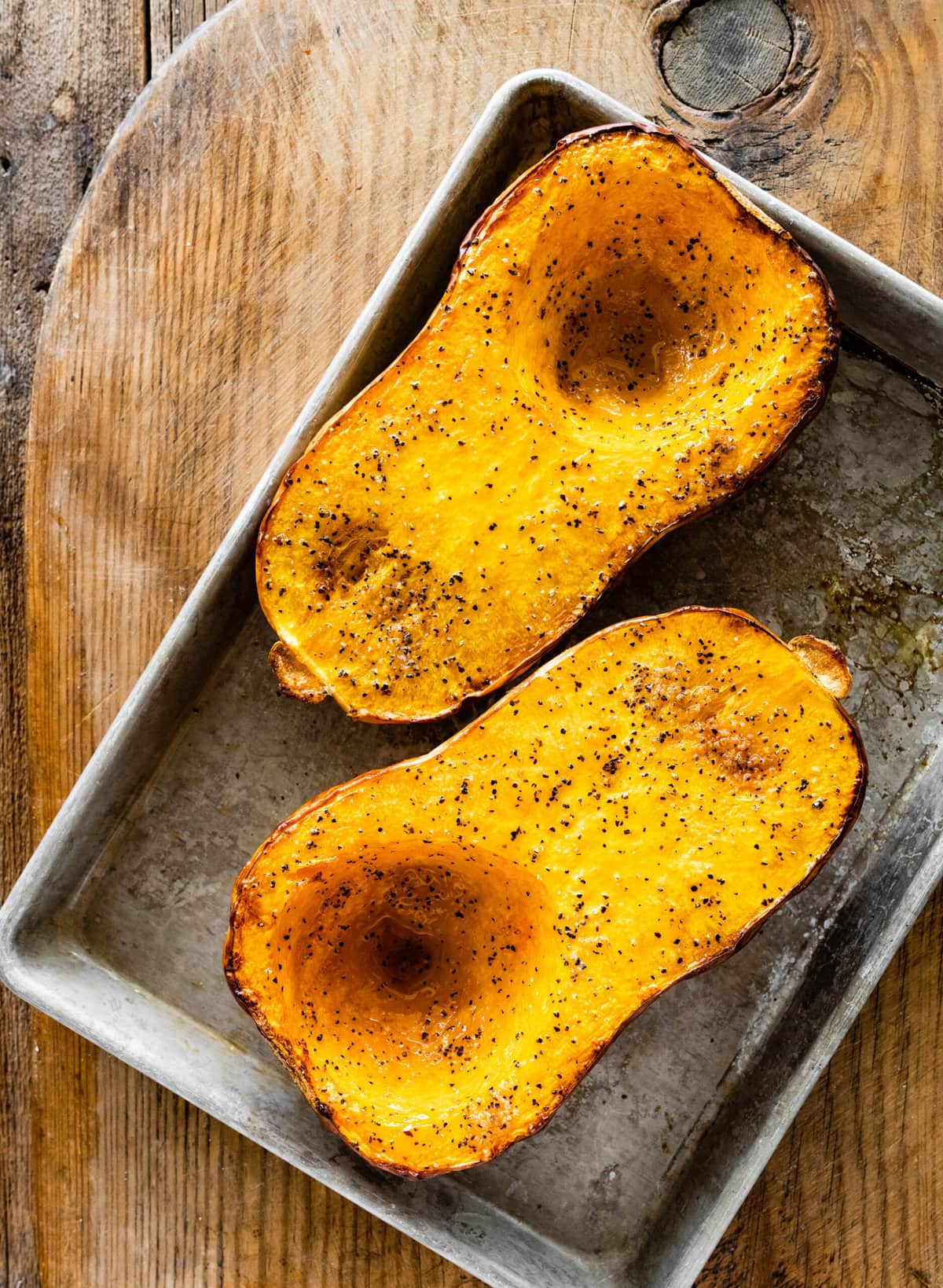
How to Choose the Best Butternut Squash
Choosing the best butternut squash ensures you get a flavorful and tender vegetable. Here’s a guide for when you are at the grocery store:
Color: Look for butternut squash with a uniform, matte tan, or beige color. Avoid squash with green patches, which indicates it’s not fully ripe. Consistent color is a sign of even ripening.
Surface: Choose squash with a smooth, blemish-free surface. Avoid squash with cuts, bruises, or deep scratches, as these can lead to spoilage.
Shape: Select squash with a straight neck and a bulbous, well-rounded base. This shape indicates that the squash has matured evenly and will likely have a good flesh-to-seed ratio.
Size: Choose a size that fits your needs. Butternut squash can vary in size, but smaller to medium-sized squash is generally preferred as they tend to have sweeter and more tender flesh.
Weight: Pick up the squash and feel its weight. It should feel heavy for its size, which indicates that it’s filled with dense, flavorful flesh.
Stem: Check the stem of the squash. It should be intact and firmly attached. A healthy stem can help prevent moisture from entering the squash and causing spoilage.
Skin: Press your fingernail gently against the skin. If it doesn’t puncture easily, the squash is ripe. Avoid squash with soft spots or overly hard skin, as they may be underripe or overripe.
Sound: Tap the squash with your knuckles. It should sound hollow, indicating that the flesh is firm and well-developed.
Season: While whole butternut squash is available year-round in many places, it’s often best during the fall and early winter when it’s in season.
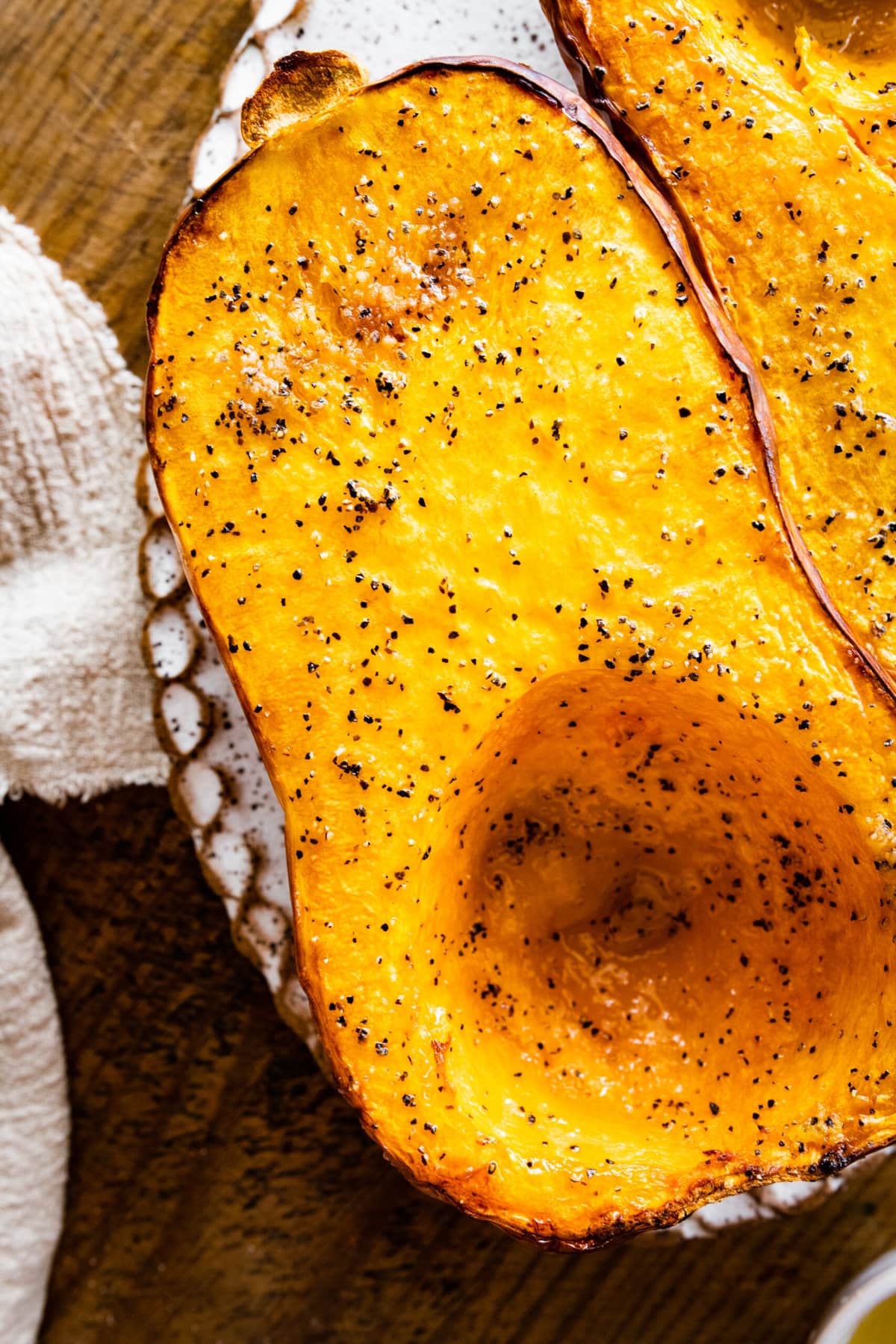
Topping Variations
You can vary the recipe to create different flavors and textures when cooking butternut squash in the oven. Here are a few variations you might enjoy:
- Savory Herb Blend: Instead of sweet seasonings, create a savory herb blend by mixing chopped fresh herbs such as rosemary, thyme, and sage with olive oil or melted butter. Spread this mixture over the cut side of the butternut squash halves before roasting. This will infuse the squash with a delicious herbal aroma.
- Warm Spices: Infuse your roasted butternut squash with a cozy blend of warm spices, adding a delightful twist to this classic recipe. After brushing the cut sides of the squash with olive oil or melted butter, generously sprinkle a mix of ground cinnamon, nutmeg, and a pinch of cloves or pumpkin pie spice over the flesh.
- Spicy Kick: Add a bit of heat by sprinkling red pepper flakes or a pinch of cayenne pepper over the squash along with the salt and pepper. This will give your roasted butternut squash a spicy kick.
- Citrus Zest: Before roasting, zest an orange or a lemon and mix the zest with olive oil or melted butter. Brush this mixture onto the cut sides of the squash and season with salt and pepper. The citrus zest will add a refreshing and tangy flavor.
- Maple Glaze: Instead of using brown sugar, drizzle pure maple syrup over the cut sides of the butternut squash before roasting. The maple syrup will caramelize and create a sweet glaze that pairs well with the squash’s natural sweetness.
- Nutty Crunch: Add a crunchy texture by sprinkling chopped nuts, such as pecans, walnuts, or almonds, over the squash halves along with your chosen seasonings. The nuts will toast as the squash roasts, adding both flavor and crunch. Add only during the last 20 minutes of cooking.
- Parmesan and Herbs: After brushing the cut side of the squash with olive oil or melted butter, sprinkle grated Parmesan cheese and chopped fresh herbs like parsley or basil over the flesh. Roast until the cheese is melted and slightly golden.
- Balsamic Glaze: Drizzle balsamic vinegar over the cut sides of the squash before roasting. The vinegar will reduce and create a tangy-sweet glaze that complements the squash’s natural sweetness.
- Honey and Thyme: Replace brown sugar with honey and sprinkle fresh thyme leaves over the squash. Combining honey’s sweetness and thyme’s earthy flavor will create a wonderful balance.

Top tips
- Choose Ripe Squash: Select a firm butternut squash has a uniform color, and feels heavy for its size. Avoid squash with green patches, cuts, or bruises.
- Prep Techniques: When cutting the squash, use a sharp knife and use caution. To make it easier, you can microwave the whole squash for a few minutes to soften its skin before cutting.
- Consistent Sizing: When cutting the squash in halves, try to keep the halves relatively even in size. This ensures even cooking and helps avoid overcooking or undercooking.
- Proper Seasoning: Whether you’re going for sweet or savory, ensure even distribution of seasonings such as butter, olive oil, salt, pepper, and optional ingredients like brown sugar or cinnamon.
- Even Roasting: Place the cut-side down on the baking sheet to help the squash caramelize evenly. Avoid overcrowding the baking sheet to allow sufficient airflow around the squash halves.
- Test for Doneness: Check for doneness by inserting a fork or knife into the flesh. It should slide in easily with little resistance when the squash is properly cooked.
FAQs
No, you do not need to remove the skin before roasting the squash. The skin is much softer and easier to remove after it has been cooked.
The squash can turn out mushy or soggy if the oven temperature isn’t high enough during the cooking process – it should be at least 400 degrees Fahrenheit. Overcooking the squash can also negatively affect the texture of the finished product.
You don’t need to peel and cut butternut squash before baking it. Roasting the squash whole or in halves with the skin on is an option. The skin is a protective barrier during roasting, keeping the flesh moist. After roasting, you can easily scoop out the cooked flesh from the skin. So, for this method, you can skip the vegetable peeler.
You can use other types of winter squash for this recipe, such as acorn squash, delicata squash, or kabocha squash. Adjust the cooking times and temperatures as needed based on the specific squash variety.
Make Ahead & Storage Instructions
To store roasted butternut squash, cool it to room temperature and transfer it to an airtight container or resealable bag. Refrigerate for 3-5 days or freeze for 2-3 months. Thaw and reheat as needed for use in various dishes.
More Recipes
Looking for other recipes? Try these:
Serving Suggestions
These are my favorite dishes to serve with :
💙 MADE THIS RECIPE AND LOVED IT? 💙 Please leave a ⭐️STAR rating and COMMENT below- I love connecting with you! Tag me with your creations on Instagram and find me on Pinterest.
Butternut Squash Recipe

Ingredients
- 1 whole butternut squash
- 1 tablespoons Butter, melted, Coconut Oil, or Olive Oil
- Salt and pepper, to taste
- Brown sugar, optional
- Ground cinnamon, optional
- Hazelnuts, optional for garnish
- Savory herbs, optional for garnish
- *See variations in Notes for more flavor options.
Instructions
- Preheat the Oven: Preheat your oven to 400°F.
- Prepare the Butternut Squash: Wash the butternut squash thoroughly under running water to remove any dirt. Using a sharp knife on a clean cutting board, carefully cut the butternut squash in half lengthwise. This will create two halves, each with a bulbous end and a narrower neck.
- Scoop Out Seeds: Use a spoon to scoop out the seeds and stringy fibers from both halves of the butternut squash. You can discard the seeds or save them for roasting later if desired.
- Season the Squash: Place the butternut squash halves, cut side up, on a baking sheet, baking pan, or roasting pan. Brush the olive oil or melted butter over each squash half. Spread it around to coat the flesh. Sprinkle salt and pepper over the buttered or oiled squash halves. This will enhance the flavor. Optional Brown Sugar Glaze: If you want to add a touch of sweetness and warmth, mix brown sugar and ground cinnamon in a small bowl. Sprinkle this mixture over the flesh of the butternut squash halves. The brown sugar and cinnamon will caramelize during roasting, creating a delicious glaze.
- Roasting the Squash: Place the baking sheet or roasting pan with the butternut squash halves in the oven. Roast the squash for about 45-60 minutes or until the flesh is tender and easily pierced with a fork. Cooking times may vary based on the size and thickness of the squash.
- Check for Doneness: To check if the squash is done, insert a fork or knife into the flesh of the thickest part. It should slide in and out easily without resistance (fork tender).
- Serve and Enjoy: Once the butternut squash is cooked to your desired tenderness, remove it from the oven. Let the squash cool for a few minutes before handling, as it will be very hot. Garnish with hazelnuts and fresh herbs, if desired. You can scoop the soft flesh from the skin using a fork and place it on a serving plate.
- Serve: Serve the roasted butternut squash as a delicious side dish or enjoy it alone.
Notes
Instead of sweet seasonings, create a savory herb blend by mixing chopped fresh herbs such as rosemary, thyme, and sage with olive oil or melted butter. Spread this mixture over the cut side of the butternut squash halves before roasting. This will infuse the squash with a delicious herbal aroma. Warm Spices: Infuse your roasted butternut squash with a cozy blend of warm spices, adding a delightful twist to this classic recipe. After brushing the cut sides of the squash with olive oil or melted butter, generously sprinkle a mix of ground cinnamon, nutmeg, and a pinch of cloves or pumpkin pie spice over the flesh. Roast as usual Spicy Kick:
Add a bit of heat by sprinkling red pepper flakes or a pinch of cayenne pepper over the squash along with the salt and pepper. This will give your roasted butternut squash a spicy kick. Citrus Zest:
Before roasting, zest an orange or a lemon and mix the zest with olive oil or melted butter. Brush this mixture onto the cut sides of the squash and season with salt and pepper. The citrus zest will add a refreshing and tangy flavor. Maple Glaze:
Instead of using brown sugar, drizzle pure maple syrup over the cut sides of the butternut squash before roasting. The maple syrup will caramelize and create a sweet glaze that pairs well with the squash’s natural sweetness. Nutty Crunch:
Add a crunchy texture by sprinkling chopped nuts over the squash halves and your chosen seasonings, such as pecans, walnuts, or almonds. The nuts will toast as the squash roasts, adding both flavor and crunch. Add only during the last 20 minutes of cooking. Parmesan and Herbs:
After brushing the cut side of the squash with olive oil or melted butter, sprinkle grated Parmesan cheese and chopped fresh herbs like parsley or basil over the flesh. Roast until the cheese is melted and slightly golden. Coconut Curry Twist:
Create a unique flavor profile by brushing the squash with coconut oil and seasoning it with a curry spice blend and salt and pepper. Roast the squash until tender, and enjoy the fusion of flavors. Balsamic Glaze:
Drizzle balsamic vinegar over the cut sides of the squash before roasting. The vinegar will reduce and create a tangy-sweet glaze that complements the squash’s natural sweetness. Honey and Thyme:
Replace brown sugar with honey and sprinkle fresh thyme leaves over the squash. Combining honey’s sweetness and thyme’s earthy flavor will create a wonderful balance.
Nutrition
Nutrition information is automatically calculated, so should only be used as an approximation.
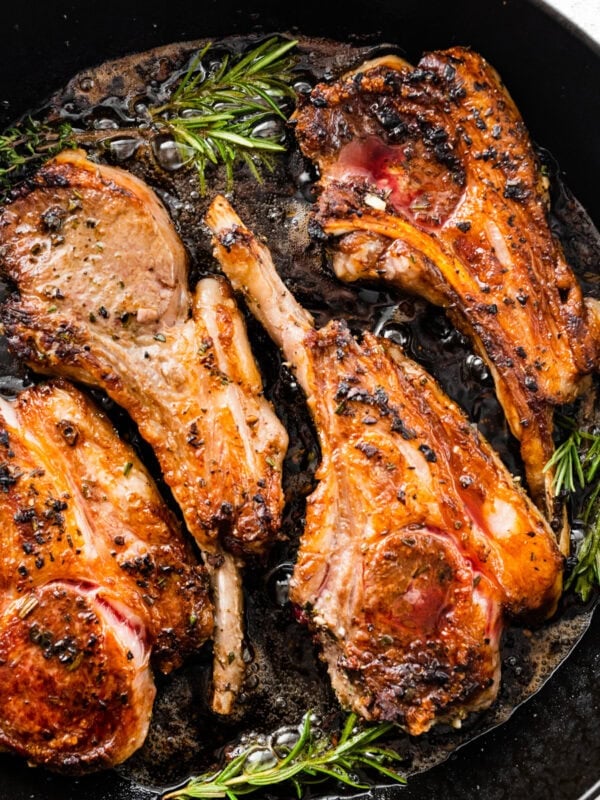
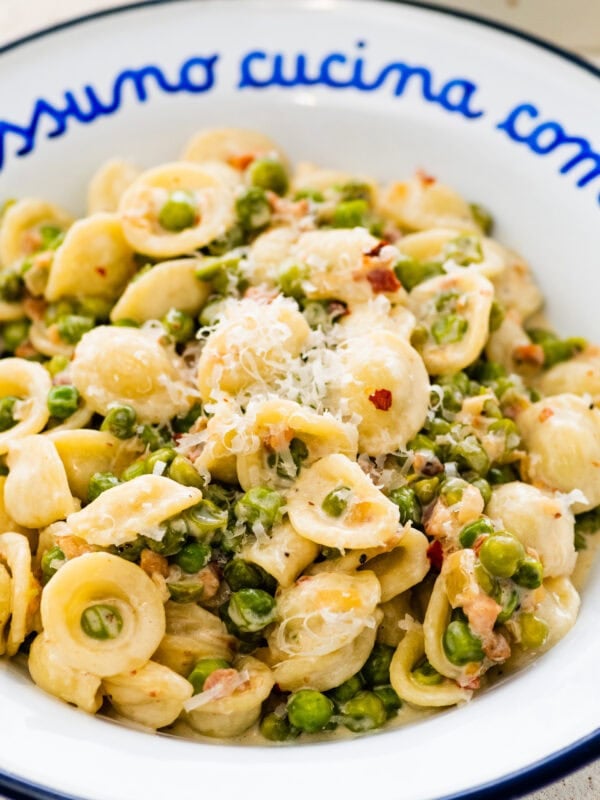
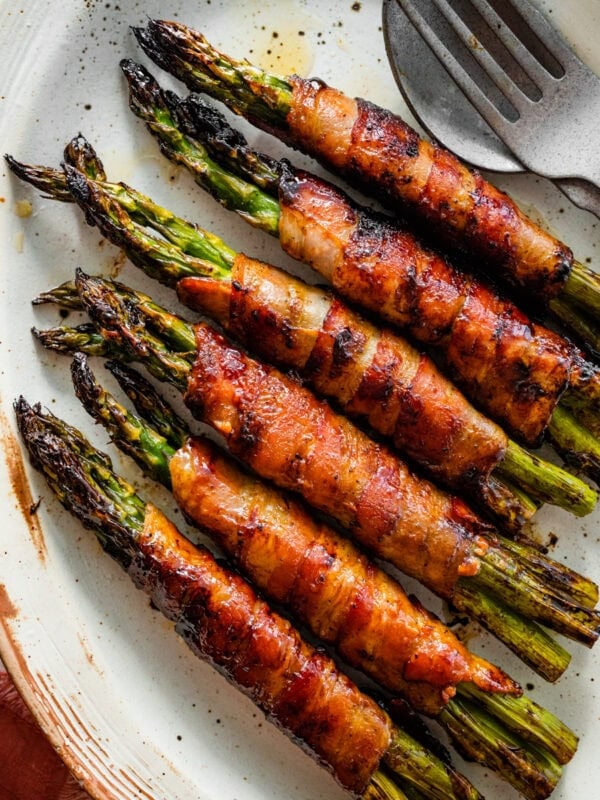
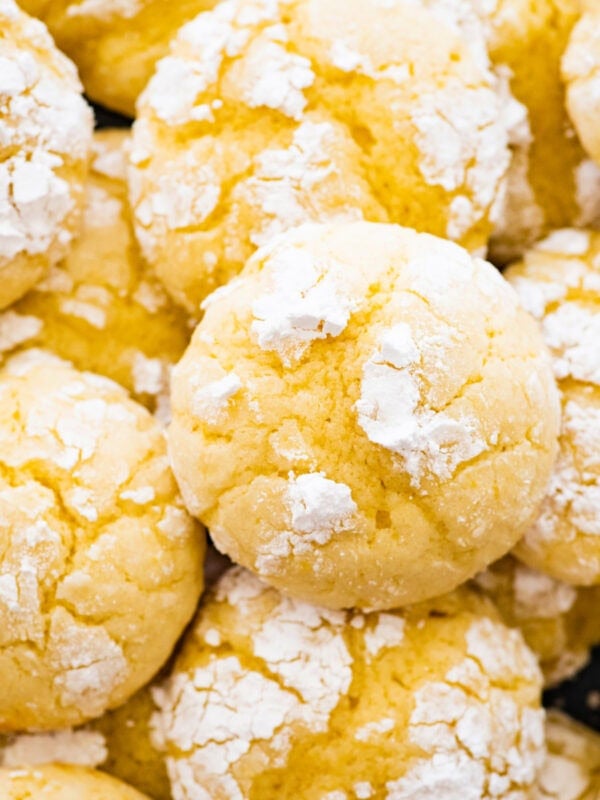
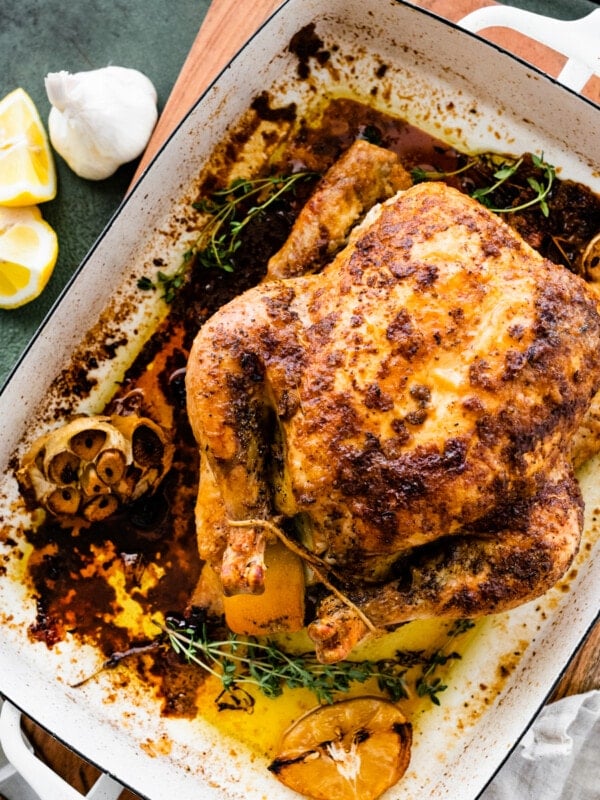
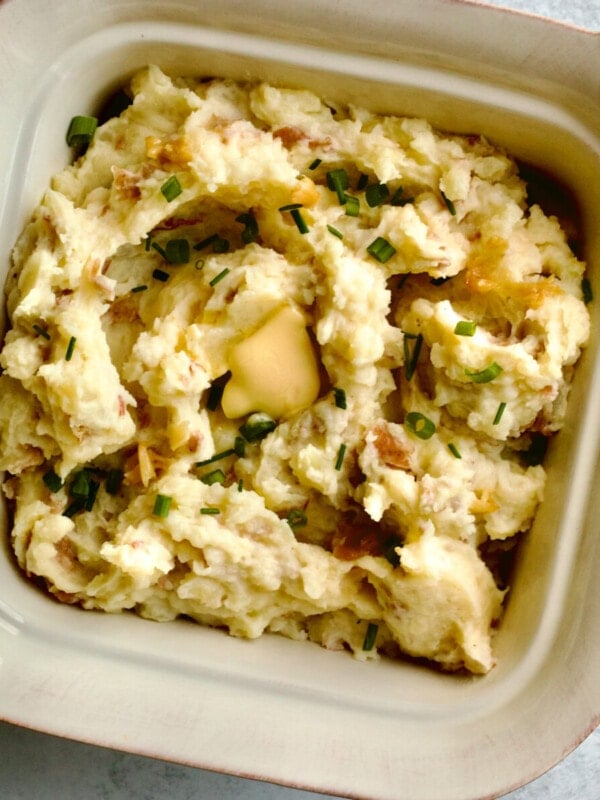
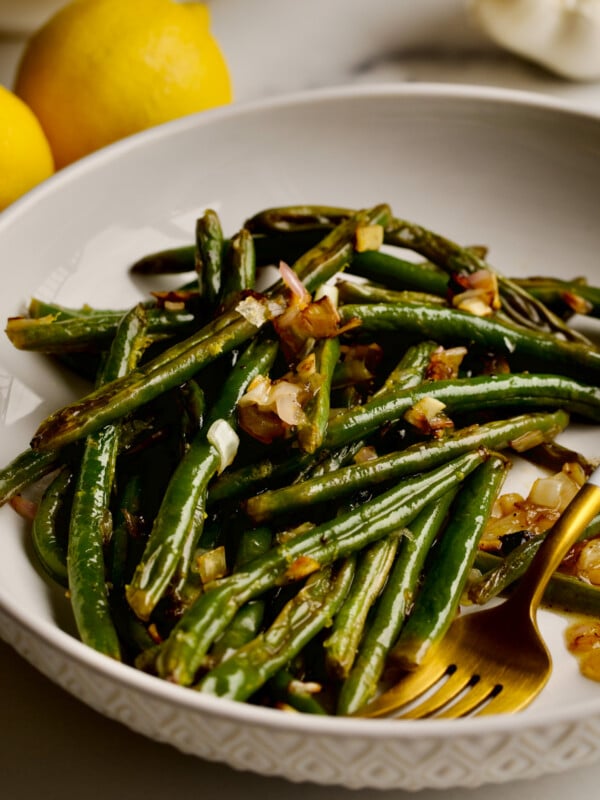
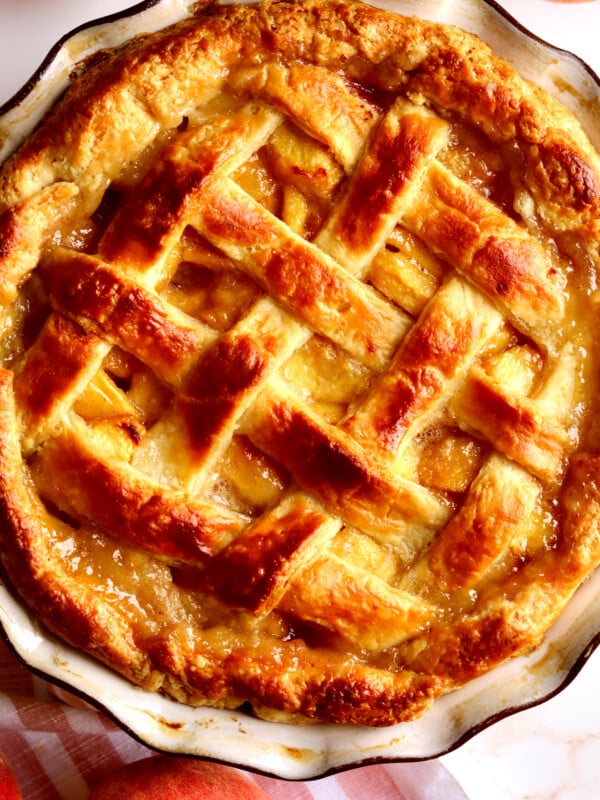
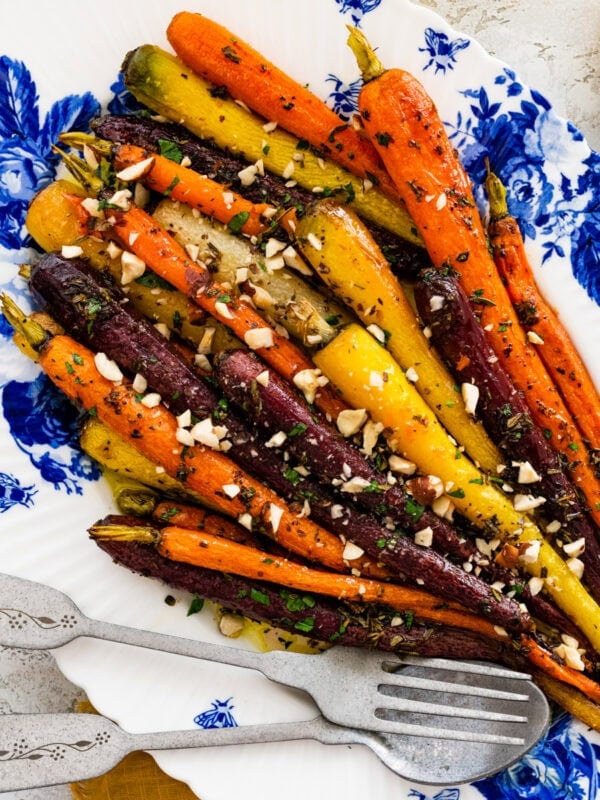
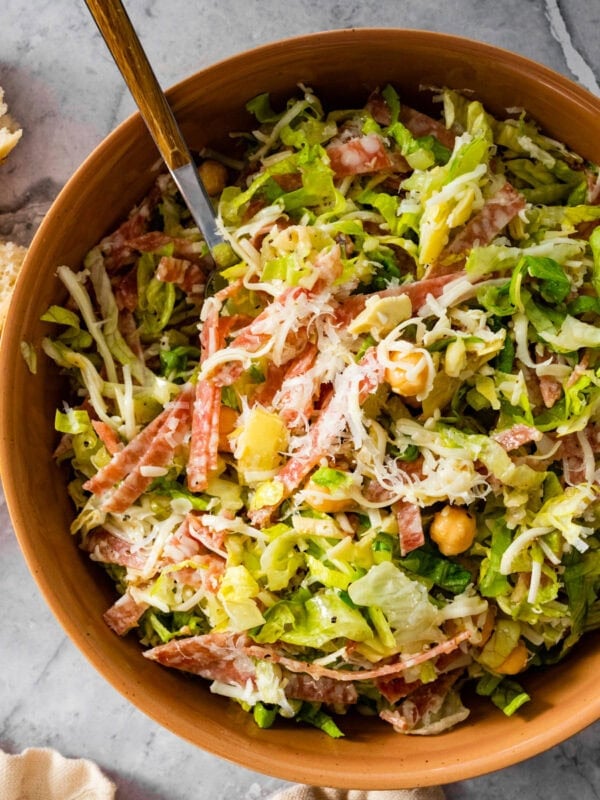
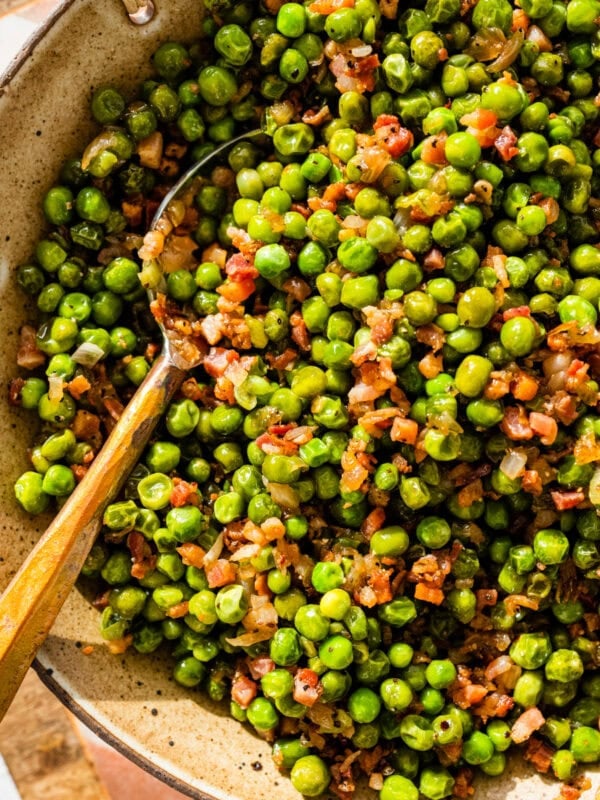
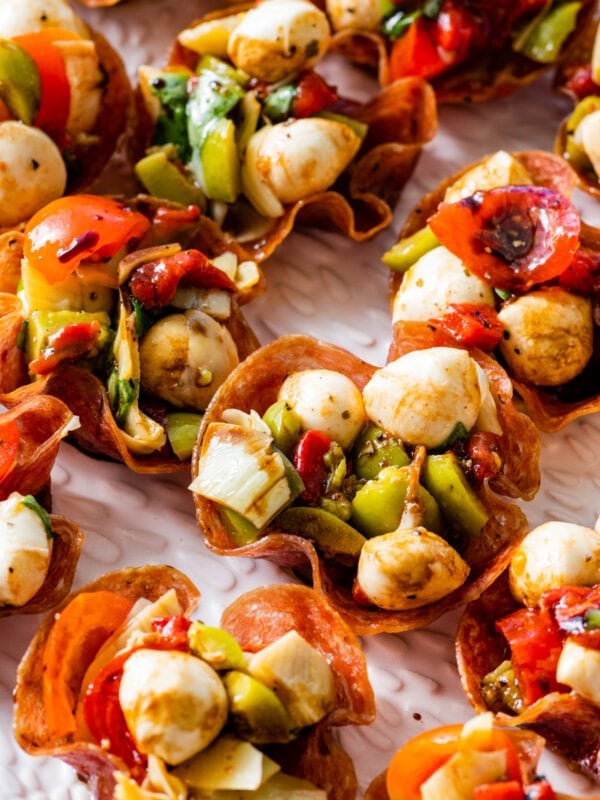




I tried this very easy recipe and shared it with my friends. It turned out great and they were impressed with the ease and time it took to make this awesome side dish. I printed out a copy for everyone. Thanks.
So happy you loved and shared! Yes! So easy and yummy. Try all the variations it’s so versatile.
Turns out amazing cooked like this ⭐️⭐️⭐️⭐️⭐️!